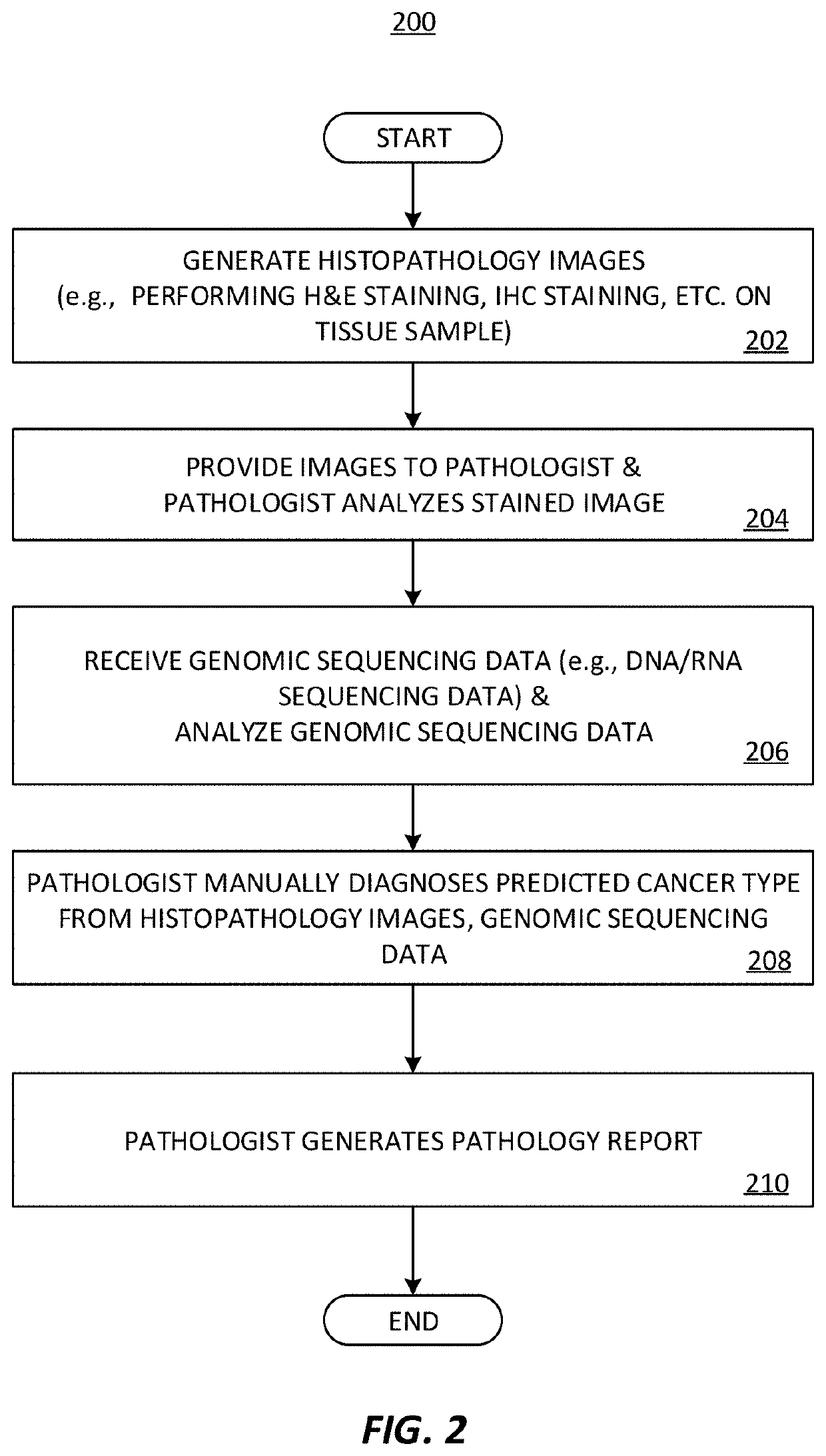Predicting total nucleic acid yield and dissection boundaries for histology slides
a technology of total nucleic acid and dissection boundaries, which is applied in the direction of image enhancement, instruments, and recognition of medical/anatomical patterns, etc., can solve the problems of destroying cells, nucleic acids, and unable to reuse in subsequent attempts,
- Summary
- Abstract
- Description
- Claims
- Application Information
AI Technical Summary
Benefits of technology
Problems solved by technology
Method used
Image
Examples
Embodiment Construction
[0082]An imaging-based biomarker prediction system is formed of a deep learning framework configured and trained to directly learn from histopathology slides and predict the presence of biomarkers in medical images. The deep learning frameworks may be configured and trained to analyze medical images and identify biomarkers that indicate the presence of a tumor, a tumor state / condition, or information about a tumor of the tissue sample.
[0083]In an implementation, a cloud-based deep learning framework is used for medical image analysis. Deep learning algorithms automatically learn sophisticated imaging features for enhanced diagnosis, prognosis, treatment indication, and treatment response prediction. In examples, the deep learning frameworks are able to directly connect to cloud storage and leverage resources on cloud platforms for efficient deep learning algorithm training, comparison, and deployment.
[0084]In some examples, the deep learning frameworks include a multiscale configura...
PUM
| Property | Measurement | Unit |
|---|---|---|
| thicknesses | aaaaa | aaaaa |
| thicknesses | aaaaa | aaaaa |
| distance | aaaaa | aaaaa |
Abstract
Description
Claims
Application Information
 Login to View More
Login to View More - R&D
- Intellectual Property
- Life Sciences
- Materials
- Tech Scout
- Unparalleled Data Quality
- Higher Quality Content
- 60% Fewer Hallucinations
Browse by: Latest US Patents, China's latest patents, Technical Efficacy Thesaurus, Application Domain, Technology Topic, Popular Technical Reports.
© 2025 PatSnap. All rights reserved.Legal|Privacy policy|Modern Slavery Act Transparency Statement|Sitemap|About US| Contact US: help@patsnap.com



